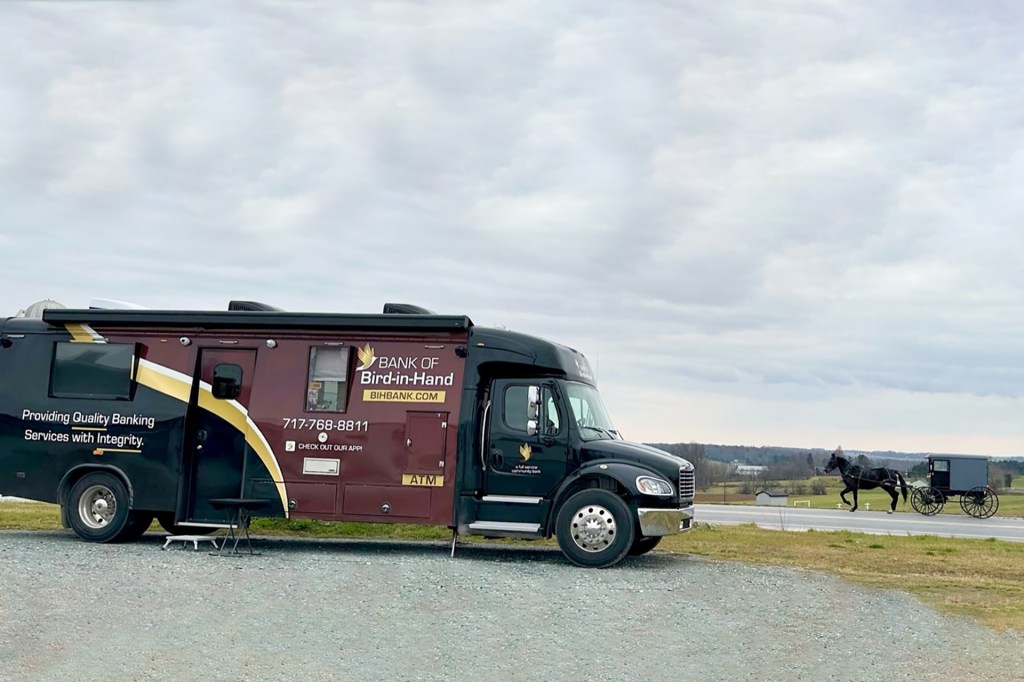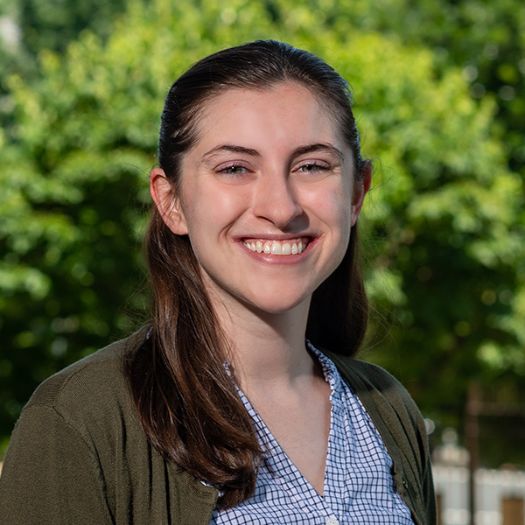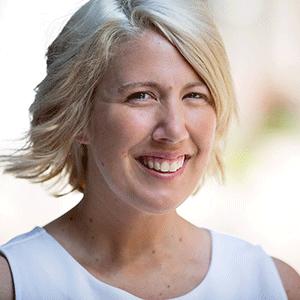In today’s world, we all require access to financial services. Thanks to technology it’s possible to deposit checks, transfer funds, and make investment trades from anywhere using a smartphone. But many can’t or choose not to access financial services digitally. With the number of brick-and-mortar bank branches declining and low digital accessibility in many areas of the nation, banking deserts are more of a concern now than ever. And while increasingly more consumers are opting to bank online, some still rely on in-person banking.
Happily, not all physical bank branches are stationary. And some banks are seeing an opportunity to go where their customers are.
Two community banks, Bank of Bird-in-Hand and BankOnBuffalo, uniquely combat banking deserts by bringing access to financial services into their communities.
What is a banking desert?
A banking desert is a term used to describe a census tract lacking a physical bank branch within the tract or a certain geographic radius from its population center. The radius varies depending on the type of community, with 2 miles for urban areas, 5 miles for suburban areas, and 10 miles for rural areas (adapted from the Interagency Notice of Proposed Rulemaking to Implement the CRA).

How close are you to a banking desert?
Discover banking deserts and potential banking deserts using the Banking Deserts Dashboard. This interactive dashboard provides census tract-level data of physical bank branch availability within all 50 states from 2019-2023.
Bank of Bird-in-Hand blends tradition and innovation
Horses in the drive-through are a normal occurrence at the Bank of Bird-in-Hand, headquartered in Bird-in-Hand, Lancaster County, PA.
Besides expanding their banking drive-through lanes to be large enough to accommodate horse-and-buggy transportation, the Bank of Bird-in-Hand recognized challenges faced by the Amish community, including residents’ limited travel capabilities and lack of access to technology. The bank devised a plan to bring banking services directly to them, transforming buses into fully functional branches in designated rotating locations.

In evaluating potential banking locations, Lori Maley, president and CEO of Bank of Bird-in-Hand, emphasized the importance of thorough data analysis. Lori’s team considers an area’s population, individual income, accessibility, and deposits – some of which are available in the Banking Deserts Dashboard – before opening a banking location. “We looked at particular challenges in Bernville, PA, where Truist Bank had a significant deposit summary, but surrounding branches had closed in recent years, which required us to take a closer look at the data,” she said.
“Not everyone wants to bank online. We have German Baptist customers living in the Bernville, PA community. While some drive cars, they do not use computers or online banking.”
The tellers at Lori’s branch office know customers personally, which builds trust and familiarity. Lori shared instances of her staff helping Amish customers deal with fraud, illustrating the value of a hands-on approach when issues arise.
In reflecting on Bank of Bird-in-Hand’s history, from its beginnings in 2013 to the challenges faced in reaching their target audience, Lori recounted the bank’s focus on building relationships in specific communities rather than expanding along major corridors. She attributes their success to the cultural fit between the bank’s values and those of the Amish and Mennonite communities it serves.
“We built our bank on the belief that you must lead by example to provide excellent customer service. Our footprint demonstrates our commitment, and we serve customers in Amish and Mennonite communities.”
– Lori Maley, president and CEO of Bank of Bird-in-Hand
A modern spin on old-fashioned banking
Bank of Bird-in-Hand’s commitment to customer service goes beyond conventional banking. Many of their Amish customers were faced with check and mail fraud since many of their customers still send checks through the postal service. The Bank of Bird-in-Hand team made a conscientious effort to educate them on how to handle fraud incidents, mirroring a time when community banking was rooted in personal connections and trust.
“I think you can’t expect your people to have that level of service if you don’t practice what you preach and live it. So that’s what we’ve built this bank on.” “I think the footprint that we’ve developed really demonstrates that.”
The community has embraced the mobile bank branch program established by Bank of Bird-in-Hand. They have even gone so far to place a wagon adorned with the bank’s logo as a token of appreciation.
Bank of Bird-in-Hand’s journey over the past decade has not only defied the odds but has also established a model of banking that blends tradition with innovation, providing essential services to communities that need them the most.
As they continue to expand their mobile and permanent branch footprint, one thing remains certain – the horse in the drive-through is not just a quirky photo-op but a powerful symbol of a bank that truly understands and serves its community.

BankOnBuffalo adapts a rural-outreach model to their urban community’s needs
BankOnBuffalo, a division of CNB Bank, recognizes the need for financial inclusion in urban communities. Headquartered in Buffalo, NY, BankOnBuffalo recognized that a lower-income community in their service area lacked access to in-person banking services. In response, they introduced BankOnWheels, a mobile bank branch initiative that revolutionized the banking experience for the community. The initiative has brought essential banking services to multiple locations, enhanced financial literacy, and fostered trust with consumers who had been hurt by financial institutions.
“BankOnWheels drew inspiration from the rural outreach model of the Bank of Bird-in-Hand, showcasing a commitment to learning from diverse experiences,” Marty Griffith, senior executive vice president and chief banking officer at CNB Bank, shared. “We took a trip down to spend some time with those folks, and they were generous enough to share with us their program. We felt we could replicate their success model in our community.”

A mission-first model of building trust in the community
BankOnWheels offers check-cashing, deposits, and other financial services, ensuring everyone can access any product or service traditionally offered at brick-and-mortar branches. Moreover, they prioritize building personal connections and understanding the unique financial needs of the community. “We have a mission-first model of building trust.”
Michael Anderson, senior vice president and regional manager at BankOnBuffalo, described the importance of the program’s versatility. “Each team member is equipped to perform teller transactions and provide financial services, such as loans.” He also described how BankOnWheels engages with thousands of individuals through financial literacy programs and seminars in collaboration with workforce development centers, community centers, and community colleges.
Darnell Haywood, the Community Responsibility Officer with BankOnBuffalo, reiterated the importance of trust in establishing connections with the community. Building relationships, fostering trust, and delivering a personal touch through the mobile branch experience became powerful tools to address deep-seated skepticism stemming from negative past banking experiences.
“Can we trust you as my banker?” is a recurring question they hear from some potential clients.
One of the unique offerings of BankOnBuffalo is the Stress Less Account. This offering aims to make individuals “bankable again” by empowering folks in the community to open new accounts. According to Darnell, this innovative approach sets itself apart from other BankOn-certified accounts offered by competitors, which are often marketed only as free checking accounts.

A model for more banks to follow
BankOnWheels is working to redefine banking accessibility by building trust and contributing to financial inclusion in the underserved communities of Buffalo. Marty regularly encourages more banks to explore these types of innovative approaches.
“If we can do anything to spread the word and have others at least consider it, we think this is something that could benefit other banks.”
– Marty Griffith, senior executive vice president and chief banking officer at CNB Bank
Regulation on wheels
Bank of Bird-in-Hand and BankOnBuffalo are two community banks working to bridge the gap between financial institutions and underserved communities. As with traditional brick-and-mortar bank locations, mobile branches are subject to regulation and may face logistical challenges such as constraints when looking to expand or serve new areas or the types of transactions that can occur through a facility.
According to Micah Spector, Team Manager with the Consumer Compliance/Community Reinvestment Act (CRA) Examinations Unit at the Philadelphia Fed, the barrier to entry may be lower for opening a mobile branch than a brick-and-mortar branch. And, while relatively few mobile branches are active, they have risen in popularity as a strategy banks implement in response to unmet needs or convenience.
From a regulatory perspective, the recently issued CRA final rule reflects increasing public awareness around banking deserts. According to Micah, regulators plan to continue to monitor bank branch closure activities. “That is something that’s going to continue to be a focus even under the new rule. Are you closing branches? Are those branches you’re closing in low- and moderate-income areas? And if the answer is yes, then that can negatively impact the bank from their ability to serve those areas.”
While mobile branches may be the right fit for some communities, challenges with improving banking access in other communities may call for a different strategy. Micah says it’s up to banks to understand the unique needs of their community before determining whether mobile branches are the best strategy. “It’s going to depend on the institution and how willing they are to go outside their box, literally and figuratively, from a branch perspective.”
To get started understanding the banking needs of your community, explore your area with the Banking Deserts Dashboard.








